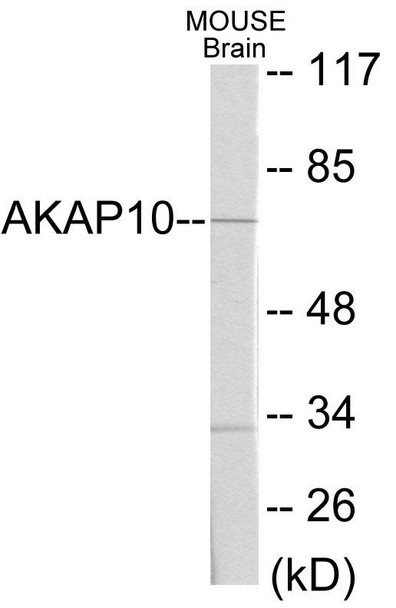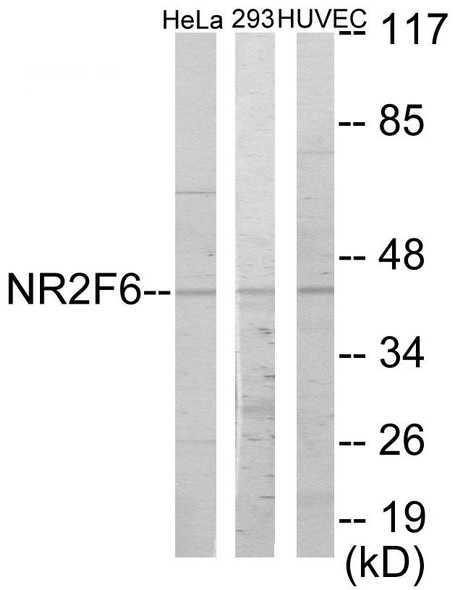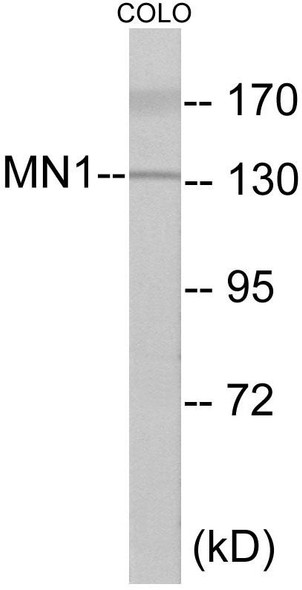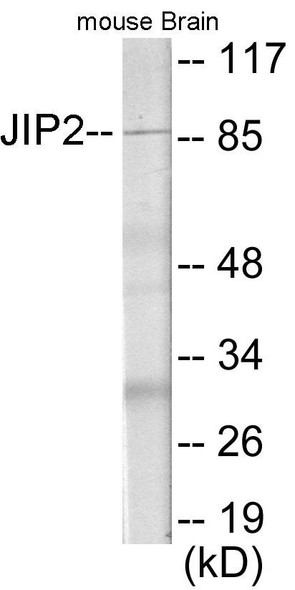Description
AKAP10 Colorimetric Cell-Based ELISA
The AKAP10 Colorimetric Cell-Based ELISA Kit is a cutting-edge tool designed for detecting and measuring levels of AKAP10 in cell lysates and culture supernatants. This kit offers high sensitivity and specificity, ensuring accurate and reliable results for your research needs.AKAP10, also known as A-Kinase Anchoring Protein 10, plays a crucial role in cell signaling pathways and cellular functions. It is involved in regulating protein kinases and mediating various cellular processes, making it a key protein of interest in the field of cell biology and molecular research.
By using the AKAP10 Colorimetric Cell-Based ELISA Kit, researchers can gain valuable insights into the function and regulation of AKAP10 in different cell types and conditions. This kit is ideal for studying signal transduction pathways, cell cycle regulation, and other cellular processes where AKAP10 is involved.Overall, the AKAP10 Colorimetric Cell-Based ELISA Kit is a valuable tool for researchers looking to study the role of AKAP10 in cellular biology and advance our understanding of its function in health and disease.
| Product Name: | AKAP10 Colorimetric Cell-Based ELISA |
| Product Code: | CBCAB00935 |
| ELISA Type: | Cell-Based |
| Target: | AKAP10 |
| Reactivity: | Human, Mouse, Rat |
| Dynamic Range: | > 5000 Cells |
| Detection Method: | Colorimetric 450 nmStorage/Stability:4°C/6 Months |
| Format: | 96-Well Microplate |
The AKAP10 Colorimetric Cell-Based ELISA Kit is a convenient, lysate-free, high throughput and sensitive assay kit that can detect AKAP10 protein expression profile in cells. The kit can be used for measuring the relative amounts of AKAP10 in cultured cells as well as screening for the effects that various treatments, inhibitors (ie siRNA or chemicals), or activators have on AKAP10.
Qualitative determination of AKAP10 concentration is achieved by an indirect ELISA format. In essence, AKAP10 is captured by AKAP10-specific primary antibodies while the HRP-conjugated secondary antibodies bind the Fc region of the primary antibody. Through this binding, the HRP enzyme conjugated to the secondary antibody can catalyze a colorimetric reaction upon substrate addition. Due to the qualitative nature of the Cell-Based ELISA, multiple normalization methods are needed:
| 1. | A monoclonal antibody specific for human GAPDH is included to serve as an internal positive control in normalizing the target absorbance values. |
| 2. | Following the colorimetric measurement of HRP activity via substrate addition, the Crystal Violet whole-cell staining method may be used to determine cell density. After staining, the results can be analysed by normalizing the absorbance values to cell amounts, by which the plating difference can be adjusted. |
| Database Information: | Gene ID: 11216, UniProt ID: O43572, OMIM: 604694, Unigene: Hs.642676. |
| Gene Symbol: | AKAP10 |
| Sub Type: | None |
| UniProt Protein Function: | AKAP10: Differentially targeted protein that binds to type I and II regulatory subunits of protein kinase A and anchors them to the mitochondria or the plasma membrane. Although the physiological relevance between PKA and AKAPS with mitochondria is not fully understood, one idea is that BAD, a proapoptotic member, is phosphorylated and inactivated by mitochondria-anchored PKA. It cannot be excluded too that it may facilitate PKA as well as G protein signal transduction, by acting as an adapter for assembling multiprotein complexes. With its RGS domain, it could lead to the interaction to G-alpha proteins, providing a link between the signaling machinery and the downstream kinase. Genetic variations in AKAP10 are a cause of susceptibility to sudden cardiac death (SCD). Unexpected rapid natural death due to cardiovascular collapse within one hour of initial symptoms. It is usually caused by the worsening of existing heart diseases. The sudden onset of symptoms, such as chest pain and cardiac arrhythmias, particularly ventricular tachycardia, can lead to the loss of consciousness and cardiac arrest followed by biological death. Increased susceptibility to sudden cardiac death may be conferred by AKAP10 variants that are associated with markers of low vagus nerve sensitivity, e.g. fast basal heart rate and low heart rate variability. |
| UniProt Protein Details: | Protein type:Adaptor/scaffold Chromosomal Location of Human Ortholog: 17p11.1 Cellular Component: mitochondrion; cytoplasm; plasma membrane; cytosol Biological Process: protein localization; signal transduction; blood coagulation Disease: Cardiac Conduction Defect |
| NCBI Summary: | This gene encodes a member of the A-kinase anchor protein family. A-kinase anchor proteins bind to the regulatory subunits of protein kinase A (PKA) and confine the holoenzyme to discrete locations within the cell. The encoded protein is localized to mitochondria and interacts with both the type I and type II regulatory subunits of PKA. Polymorphisms in this gene may be associated with increased risk of arrhythmias and sudden cardiac death. [provided by RefSeq, May 2012] |
| UniProt Code: | O43572 |
| NCBI GenInfo Identifier: | 21493033 |
| NCBI Gene ID: | 11216 |
| NCBI Accession: | NP_009133.2 |
| UniProt Secondary Accession: | O43572,Q96AJ7, B2R650, |
| UniProt Related Accession: | O43572 |
| Molecular Weight: | 73,818 Da |
| NCBI Full Name: | A-kinase anchor protein 10, mitochondrial |
| NCBI Synonym Full Names: | A kinase (PRKA) anchor protein 10 |
| NCBI Official Symbol: | AKAP10 |
| NCBI Official Synonym Symbols: | PRKA10; AKAP-10; D-AKAP2; D-AKAP-2 |
| NCBI Protein Information: | A-kinase anchor protein 10, mitochondrial; protein kinase A anchoring protein 10; dual specificity A kinase-anchoring protein 2; mitochondrial A kinase PPKA anchor protein 10 |
| UniProt Protein Name: | A-kinase anchor protein 10, mitochondrial |
| UniProt Synonym Protein Names: | Dual specificity A kinase-anchoring protein 2; D-AKAP-2; Protein kinase A-anchoring protein 10; PRKA10 |
| Protein Family: | A-kinase anchor protein |
| UniProt Gene Name: | AKAP10 |
| UniProt Entry Name: | AKA10_HUMAN |
| Component | Quantity |
| 96-Well Cell Culture Clear-Bottom Microplate | 2 plates |
| 10X TBS | 24 mL |
| Quenching Buffer | 24 mL |
| Blocking Buffer | 50 mL |
| 15X Wash Buffer | 50 mL |
| Primary Antibody Diluent | 12 mL |
| 100x Anti-Phospho Target Antibody | 60 µL |
| 100x Anti-Target Antibody | 60 µL |
| Anti-GAPDH Antibody | 60 µL |
| HRP-Conjugated Anti-Rabbit IgG Antibody | 12 mL |
| HRP-Conjugated Anti-Mouse IgG Antibody | 12 mL |
| SDS Solution | 12 mL |
| Stop Solution | 24 mL |
| Ready-to-Use Substrate | 12 mL |
| Crystal Violet Solution | 12 mL |
| Adhesive Plate Seals | 2 seals |
The following materials and/or equipment are NOT provided in this kit but are necessary to successfully conduct the experiment:
- Microplate reader able to measure absorbance at 450 nm and/or 595 nm for Crystal Violet Cell Staining (Optional)
- Micropipettes with capability of measuring volumes ranging from 1 µL to 1 ml
- 37% formaldehyde (Sigma Cat# F-8775) or formaldehyde from other sources
- Squirt bottle, manifold dispenser, multichannel pipette reservoir or automated microplate washer
- Graph paper or computer software capable of generating or displaying logarithmic functions
- Absorbent papers or vacuum aspirator
- Test tubes or microfuge tubes capable of storing ≥1 ml
- Poly-L-Lysine (Sigma Cat# P4832 for suspension cells)
- Orbital shaker (optional)
- Deionized or sterile water
*Note: Protocols are specific to each batch/lot. For the correct instructions please follow the protocol included in your kit.
| Step | Procedure |
| 1. | Seed 200 µL of 20,000 adherent cells in culture medium in each well of a 96-well plate. The plates included in the kit are sterile and treated for cell culture. For suspension cells and loosely attached cells, coat the plates with 100 µL of 10 µg/ml Poly-L-Lysine (not included) to each well of a 96-well plate for 30 minutes at 37°C prior to adding cells. |
| 2. | Incubate the cells for overnight at 37°C, 5% CO2. |
| 3. | Treat the cells as desired. |
| 4. | Remove the cell culture medium and rinse with 200 µL of 1x TBS, twice. |
| 5. | Fix the cells by incubating with 100 µL of Fixing Solution for 20 minutes at room temperature. The 4% formaldehyde is used for adherent cells and 8% formaldehyde is used for suspension cells and loosely attached cells. |
| 6. | Remove the Fixing Solution and wash the plate 3 times with 200 µL 1x Wash Buffer for five minutes each time with gentle shaking on the orbital shaker. The plate can be stored at 4°C for a week. |
| 7. | Add 100 µL of Quenching Buffer and incubate for 20 minutes at room temperature. |
| 8. | Wash the plate 3 times with 1x Wash Buffer for 5 minutes each time. |
| 9. | Add 200 µL of Blocking Buffer and incubate for 1 hour at room temperature. |
| 10. | Wash 3 times with 200 µL of 1x Wash Buffer for 5 minutes each time. |
| 11. | Add 50 µL of 1x primary antibodies (Anti-AKAP10 Antibody and/or Anti-GAPDH Antibody) to the corresponding wells, cover with Parafilm and incubate for 16 hours (overnight) at 4°C. If the target expression is known to be high, incubate for 2 hours at room temperature. |
| 12. | Wash 3 times with 200 µL of 1x Wash Buffer for 5 minutes each time. |
| 13. | Add 50 µL of 1x secondary antibodies (HRP-Conjugated AntiRabbit IgG Antibody or HRP-Conjugated Anti-Mouse IgG Antibody) to corresponding wells and incubate for 1.5 hours at room temperature. |
| 14. | Wash 3 times with 200 µL of 1x Wash Buffer for 5 minutes each time. |
| 15. | Add 50 µL of Ready-to-Use Substrate to each well and incubate for 30 minutes at room temperature in the dark. |
| 16. | Add 50 µL of Stop Solution to each well and read OD at 450 nm immediately using the microplate reader. |
(Additional Crystal Violet staining may be performed if desired – details of this may be found in the kit technical manual.)






